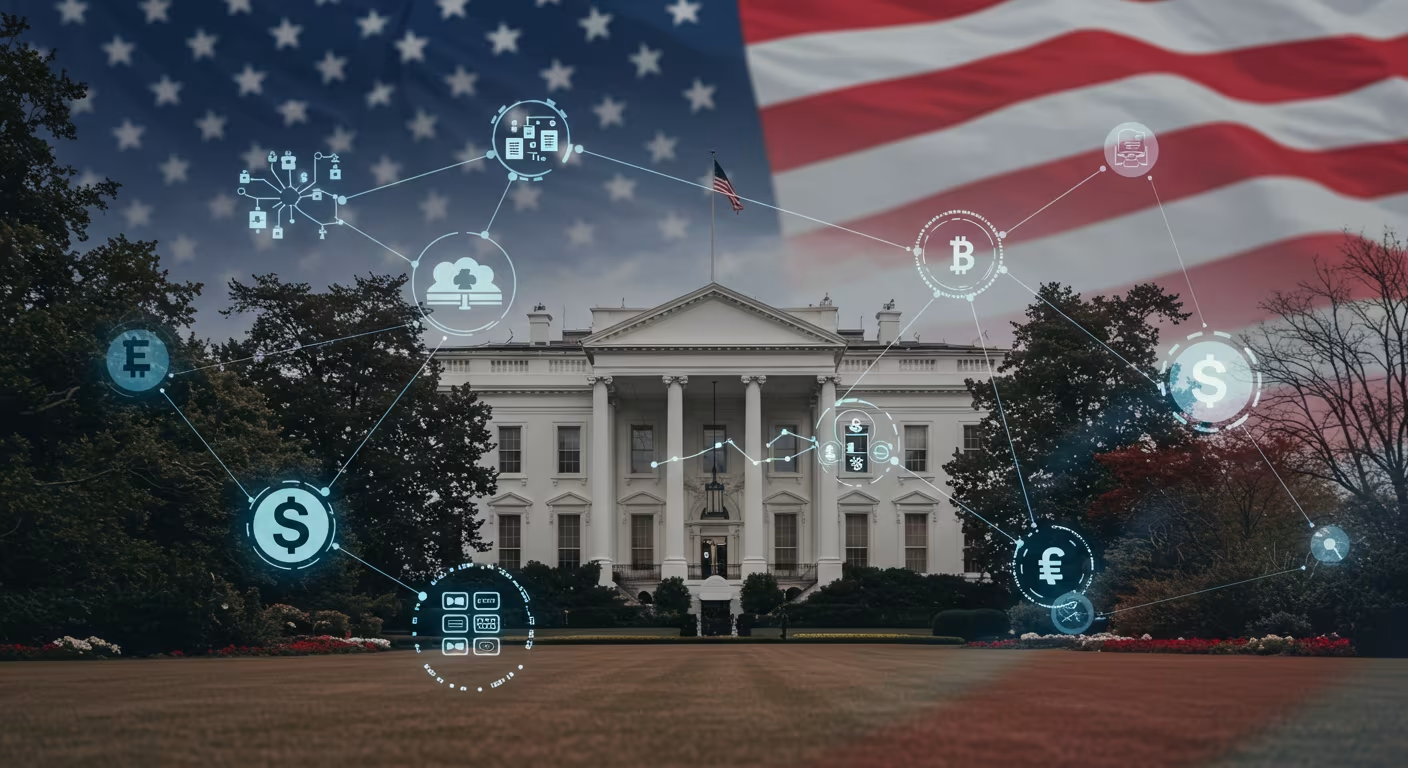In a dramatic policy shift with major implications for the U.S. financial system, the Trump administration has unveiled “Project Crypto,” a national initiative aimed at tokenizing traditional financial markets and modernizing digital infrastructure using blockchain technology. Spearheaded by a coalition of federal agencies and private-sector leaders, Project Crypto signals a bold push to bring major segments of the economy—starting with securities, commodities, and settlement systems—on-chain.
With digital assets now a central theme in both global financial innovation and geopolitical competition, the move underscores the administration’s intent to make the U.S. the undisputed leader in crypto-enabled financial systems. Project Crypto is being positioned as a technological moonshot on par with 20th-century efforts to digitize banking or launch the internet.
The announcement has already sparked interest from Wall Street, Silicon Valley, and international observers, many of whom see it as a sign that crypto’s integration into core capital markets is no longer a question of if, but when.
What Is ‘Project Crypto’?
Project Crypto is a multi-agency federal initiative coordinated by the Department of the Treasury, the Securities and Exchange Commission (SEC), the Commodity Futures Trading Commission (CFTC), and the Office of Science and Technology Policy. Its core mission is to accelerate the development and deployment of blockchain-based infrastructure that supports secure, scalable, and compliant tokenized finance in the United States.
Key components of the initiative include:
- A public-private research and development consortium focused on tokenizing stocks, bonds, and derivatives
- A legal framework for on-chain settlement and regulatory compliance
- Guidelines for the issuance of digitally native assets and smart contract-based market instruments
- Integration with the Federal Reserve’s real-time payments and digital identity platforms
- Pilot programs involving tokenized U.S. Treasuries, equities, and registered investment products
The initiative is not just about crypto-native assets like Bitcoin and Ethereum. Instead, it is aimed at bringing traditional markets into the blockchain era—leveraging decentralization to reduce friction, boost efficiency, and increase transparency across financial systems.
Policy Context and Strategic Goals
The Trump administration’s endorsement of Project Crypto reflects a broader rethinking of financial competitiveness in the face of global digital transformation. While countries like China have focused on launching central bank digital currencies (CBDCs), the U.S. is now moving toward market-driven blockchain adoption, using private innovation within a government-supported regulatory perimeter.
According to senior officials, Project Crypto will serve three primary goals:
- Preserve U.S. leadership in global finance by ensuring that tokenized markets develop under American legal standards
- Reduce systemic risks by enabling atomic settlement, real-time compliance, and improved auditability
- Promote access and inclusion, giving more Americans exposure to capital markets via programmable, fractionalized assets
In a press briefing, a White House technology advisor stated, “We don’t want American financial infrastructure to be outpaced by decentralized alternatives or foreign digital assets. Project Crypto ensures that innovation happens here, within our rules.”
Wall Street Response: Optimism Meets Urgency
Within hours of the announcement, several major financial institutions voiced support. Executives from BlackRock, Goldman Sachs, and JPMorgan applauded the vision of integrating tokenization into capital markets—especially as firms already explore blockchain rails internally.
Tokenized Treasuries, for example, have been gaining traction with fintech platforms and hedge funds as a way to offer high-yield, low-risk assets that settle instantly. With Project Crypto, such instruments could become part of mainstream investment infrastructure—enabling 24/7 trading, programmable interest, and enhanced transparency.
The Depository Trust & Clearing Corporation (DTCC) also confirmed its participation in the project’s technical advisory group, signaling potential reforms to legacy post-trade settlement systems that currently operate on T+2 timelines.
Meanwhile, startups in the tokenization and compliance automation space—such as Anchorage, Fireblocks, and Chainalysis—are expected to play critical roles in building scalable, secure, and regulation-ready tools for the initiative.
Technical Challenges and Solutions
Despite strong interest, the implementation of tokenized markets is not without hurdles. Key challenges include:
- Interoperability between blockchains and legacy infrastructure
- Scalability to handle real-world transaction volumes
- Privacy controls for sensitive financial and identity data
- Compliance integration, including KYC, AML, and tax reporting
- Smart contract standards that can be audited and enforced under existing securities law
Project Crypto will address these challenges through federated testbeds, open standard-setting bodies, and government-funded research grants. Key focus areas include the development of token taxonomies, transaction schemas, and regulatory APIs to ensure that compliance is embedded at the protocol level.
In parallel, the initiative will explore zero-knowledge proofs and privacy-preserving encryption to enable confidential trading while maintaining auditability—critical for institutional adoption.
What’s at Stake? A Race to Redefine Capital Markets
While Project Crypto is U.S.-centric, it arrives at a time when global financial systems are in flux. The rapid rise of decentralized finance (DeFi), the emergence of sovereign digital assets, and the explosive growth of tokenized real-world assets have created a new playing field for financial infrastructure.
With trillions of dollars in bonds, equities, real estate, and even art already being explored for tokenization, the next decade may see entire financial ecosystems rebuilt from the ground up. The question is: who will shape the rules?
By launching Project Crypto, the Trump administration aims to anchor this transformation within the American legal and economic system—ensuring that the U.S. remains the hub for innovation, oversight, and global capital formation.
Timeline and Next Steps
According to the roadmap released by the Treasury Department, Project Crypto will roll out in three phases:
- Research and consultation (Q3–Q4 2025) – Public comment periods, agency workshops, and pilot partner recruitment
- Testbed launches (2026) – Small-scale tokenized asset trials, regulatory sandbox deployment, and settlement system integration
- Framework standardization (2027) – Publication of final regulatory and technical standards, followed by voluntary compliance rollout for market participants
A new office within the Treasury, the Office of Tokenized Markets and Digital Infrastructure (OTMDI), will coordinate interagency efforts and manage public-private collaborations.
A Defining Moment for Market Modernization
Project Crypto represents a turning point in the evolution of U.S. financial markets. By embracing blockchain as a foundational layer—not just a fringe experiment—the Trump administration is betting that the future of markets is digital, decentralized, and on-chain.
If successful, the initiative could redefine everything from how stocks are issued to how retirement accounts are managed—ushering in an era of programmable, transparent, and real-time finance. More importantly, it positions the United States at the forefront of a global movement to reshape capital markets for the 21st century.
The world is watching. And the chain is being built.





